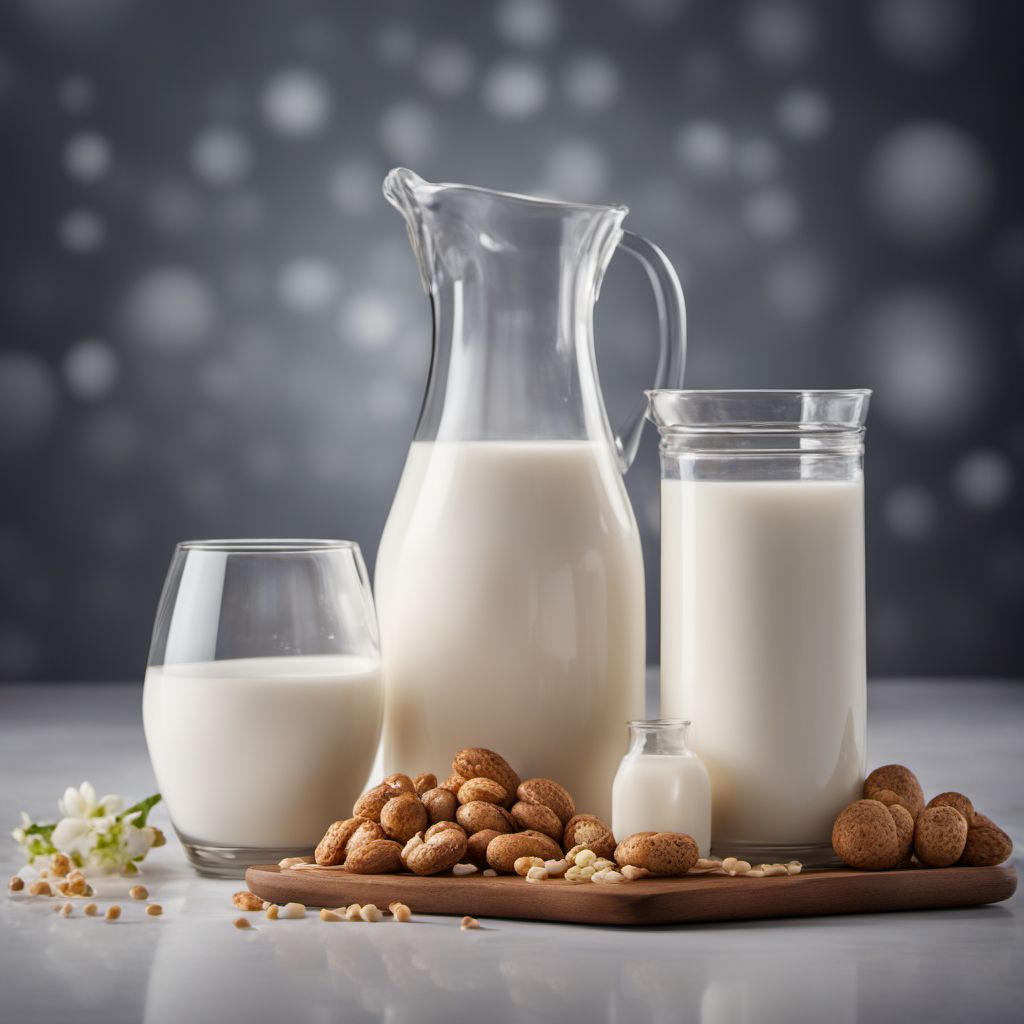
Ingredient
Milk from other milk producer animals
The Versatile Dairy Elixir
Milk from other milk producer animals is a nutritious liquid that is obtained from animals such as goats, sheep, and buffalo. It has a creamy texture, a slightly sweet taste, and a white color. It is commonly used in baking, cooking, and as a standalone beverage. Its versatility makes it a staple in many cuisines around the world.
Origins and history
Milk from other milk producer animals has been consumed by humans for thousands of years. It has a rich history in various cultures, with evidence of its consumption dating back to ancient times. Different regions have their own traditional methods of milk production and processing, resulting in unique flavors and textures. Today, milk from animals other than cows is widely available and enjoyed by people worldwide.
Nutritional information
Milk from other milk producer animals is a good source of essential nutrients such as calcium, protein, and vitamins. It provides a significant amount of calories, making it a valuable energy source. However, the nutritional composition may vary depending on the animal species and the processing methods used.
Allergens
Lactose (in cow's milk)
How to select
When selecting milk from other milk producer animals, look for products that are fresh, pasteurized, and properly sealed. Check the expiration date and ensure that the packaging is intact. Additionally, consider the source of the milk and opt for organic or sustainably produced options when available.
Storage recommendations
To maintain the freshness and quality of milk from other milk producer animals, it is important to store it properly. Keep it refrigerated at a temperature between 32°F and 40°F (0°C and 4°C). Ensure that the container is tightly sealed to prevent contamination and absorption of odors from other foods in the refrigerator. Avoid exposing the milk to direct sunlight or extreme temperature changes.
How to produce
Milk from other milk producer animals can be produced by raising animals such as goats, sheep, or buffalo. However, it requires specialized knowledge and facilities to ensure the animals' well-being and proper milk production. Consult with experts or experienced farmers to learn more about the specific requirements for each animal species.
Preparation tips
Milk from other milk producer animals can be used in a variety of ways in the kitchen. It can be enjoyed as a refreshing beverage, used as a base for creamy soups and sauces, or incorporated into baked goods such as cakes, cookies, and custards. It can also be transformed into various dairy products like cheese, yogurt, and butter.
Culinary uses
Milk from other milk producer animals is commonly used in a wide range of cuisines around the world. It is an essential ingredient in dishes such as Indian paneer, Greek feta cheese, Italian ricotta, and Middle Eastern labneh. It adds richness and depth of flavor to both savory and sweet recipes, making it a versatile culinary staple.
Availability
Milk from other milk producer animals is commonly available in regions where goat, sheep, or buffalo farming is prevalent. It can be found in grocery stores, supermarkets, and specialty food markets. Additionally, it may be obtained directly from local farmers or through online retailers that specialize in dairy products.
